Straight Up Guide To The Holidays
These guides were born out of Noah and Christine’s frustration with overly complicated and jargon-filled articles, newsletters, books, and therapy websites. Our mission is to create clear and practical guides in order to learn, grow from challenges, and lead more meaningful and impactful lives. Concerned about your sanity and well-being during the holidays? We get it. Here are five tips that can help you ride the wave of emotions that the holiday season can bring. 1) Realize the Holidays are overrated. Our culture puts way too much emphasis on the holidays and making them "special." Like many things in life, the anticipation of the holidays is usually better than the real thing. Remember that in the general scope of things, the holidays are only a few days out of the year. It is also ok to not like the holiday season or even to skip them all together. 2) Avoid comparing your holidays...



